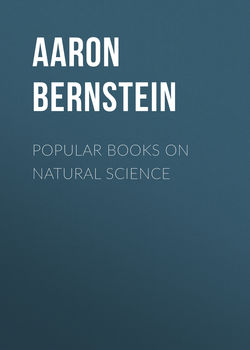Читать книгу Popular Books on Natural Science - Bernstein Aaron David - Страница 8
PART III.
NUTRITION
CHAPTER V.
WHAT BECOMES OF THE MOTHER'S MILK AFTER IT HAS ENTERED THE BODY OF THE CHILD?
ОглавлениеWhen the child has freed itself from the body of its mother, it consists of blood, flesh, and bones, which heretofore were formed and nourished by the blood of the mother.
As soon, however, as the child is born, it ceases to be nourished in this manner. It ceases, also, to secrete through its mother, substances which are useless to it. The child now begins to breathe for itself, and by its breath secretes carbon in the form of carbonic acid. Its skin begins to perspire, and secretes chiefly hydrogen and oxygen in the shape of water or vapor; by the urine, finally, it secretes nitrogen. These substances – carbon, hydrogen, oxygen, nitrogen – before their secretion, constituted vital parts of the child's body; now, however, they are wasted, and for this reason must be thrown off.
It is evident that the child wants compensation for this loss. This is given by the mother's milk; for it contains chiefly these same substances.
But how is this effected?
The milk passes from the child's mouth through the gullet into the stomach. While yet in the mouth, the milk is mixed with a certain liquid called saliva. This saliva possesses the quality of preparing the milk for the necessary change which will take place, when it reaches the child's stomach. The principal work, however, is carried on in the stomach itself. Its sides secrete a liquid called "gastric juice," whose business it is, to transform into a pulp milk, and also solid food, provided the latter be well masticated and moistened.
Science has taught us to prepare gastric juice artificially. The process of digestion, that is, the transformation of solid food – the crust of bread, meat, etc. – into a pulp, may nowadays be observed in a glass filled with warm, artificial, gastric juice.
After the digestion is completed, the lower opening of the stomach, which leads into the duodenum, and which, during the process of digestion, was closed by a muscle, opens itself. The pulp, now called "chyme," flows into the continuation of the stomach – the "alimentary canal" or "duodenum." This is but a long bag with many folds and windings.
The chyme is here mixed again with a liquid called "intestinal juice;" it has the quality of continuing digestion until the chyme separates into two parts; one of them, a milky fluid called "chyle," contains the substance which feeds the body. The other is the solid parts not adapted to nutrition; they are thrown out by the lower opening of the "rectum."
But how is this nutritive part, the chyle, conveyed into the various parts of the body?
The intestinal canal is filled with extremely small vessels called "lacteal absorbents." These vessels absorb the chyle. This absorption, on account of the great length of the intestinal canal – in adults it is nearly thirty feet long – is, in a healthy body, accomplished very thoroughly. The real nutriment for the body is now contained in the lacteal absorbents, an infinite number of small tubes.
All these small vessels, however, converge towards the lower part of the spinal column, and uniting, form a vessel which ascends into the chest; here it empties into a large blood-vessel, the blood of which is on its way to the heart. Thrown out of the heart in another direction, the blood is pushed through the whole body.
Thus the food, after having been transformed into a juice very similar to the blood, joins the blood after a circuitous journey, and is finally mixed with, or, more properly, changed into, blood.
